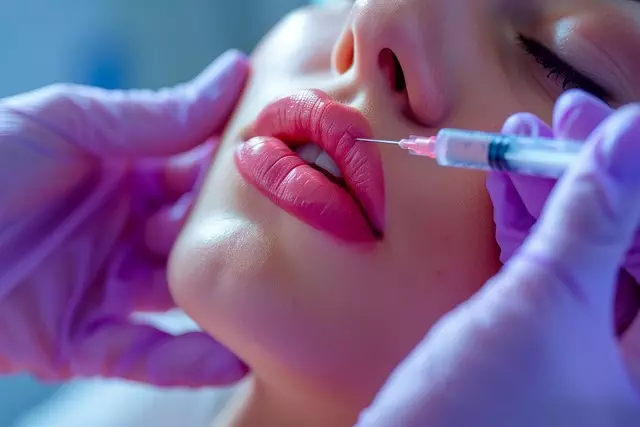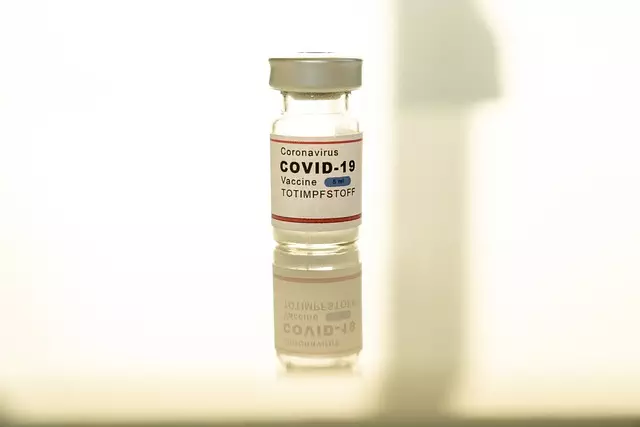Forehead lines, caused by aging, sun exposure, smoking, and facial expressions, can be addressed with Botox injections, which temporarily paralyze muscles responsible for dynamic or static lines. This non-surgical procedure offers quick results, minimal downtime, and enhanced skin smoothness lasting 3-6 months. While generally safe, side effects may include mild swelling or bruising, and persistent symptoms require medical attention. Proper post-procedure care and regular touch-up treatments maintain results.
“Unwanted forehead lines can age you beyond your years. Thankfully, Botox injections have emerged as a popular solution for reducing dynamic wrinkles. This article delves into the science behind Botox and its effectiveness in smoothing out expression lines. We explore the various types of forehead lines, how Botox works at a cellular level, and the numerous benefits of this non-invasive treatment. By understanding the procedure, potential side effects, and maintenance requirements, you can make an informed decision about whether Botox injections are right for you.”
Understanding Forehead Lines: Causes and Types

Forehead lines, often a concern for many individuals, are wrinkles or creases that appear on the glabella region (the area between the eyebrows) or the forehead. These lines can vary in depth and width, ranging from subtle furrows to deep, etched grooves. Understanding the causes and types of these lines is essential when considering treatments like Botox injections.
Several factors contribute to the formation of forehead lines. Ageing is a primary culprit, as skin loses elasticity and collagen production decreases over time. Sun exposure, smoking, and repetitive facial expressions, such as frowning or squinting, can also accelerate the development of these wrinkles. Certain genetic predispositions may make some individuals more susceptible to developing prominent forehead lines at an earlier age. Knowing these causes empowers people to take preventive measures like sun protection and lifestyle changes. Moreover, understanding that different types of forehead lines exist—from dynamic lines caused by muscle movement to static lines resulting from skin laxity—helps in selecting the most effective treatment approach, often aiming to relax or reduce the appearance of these lines through Botox injections.
The Role of Botox Injections in Reducing Forehead Wrinkles

Botox injections have emerged as a popular and effective non-surgical treatment for reducing forehead wrinkles, particularly in the glabellar lines (the vertical creases between the eyebrows). This procedure involves injecting a small amount of Botox into specific muscle groups responsible for causing these wrinkles. By temporarily paralyzing these muscles, Botox injections smooth out the skin, minimizing the appearance of fine lines and giving the face a more youthful contour.
The beauty of Botox lies in its ability to offer significant improvements without invasive surgery. It provides a non-permanent solution, as the effects typically last between 3 to 6 months, after which touch-up treatments can be administered for sustained results. This gentle approach makes it an attractive option for those seeking subtle yet effective wrinkle reduction without downtime or recovery associated with more extensive procedures.
How Botox Works to Smoothen the Skin

Botox injections work by temporarily paralyzing specific muscles responsible for causing dynamic lines and wrinkles on the forehead. This non-surgical procedure involves injecting a small amount of Botox into targeted areas, which disrupts the nerve signals that stimulate muscle contraction. As a result, the treated muscles relax, smoothing out the skin’s surface and reducing the appearance of fine lines and furrows.
The effects of Botox are gradual, taking a few days to become fully apparent. Over time, as the injected Botox begins to wear off (typically lasting 3-6 months), new collagen production is stimulated, further enhancing skin smoothness and elasticity. This makes Botox not just an immediate solution for smoothing forehead lines but also a preventative measure that can encourage healthier, younger-looking skin in the long term.
Benefits of Botox Treatment for Forehead Lines

Botox injections have emerged as a popular and effective non-surgical treatment for reducing forehead lines and wrinkles. This cosmetic procedure offers several key advantages, making it an appealing option for those seeking youthful-looking skin. One of the primary benefits is its ability to temporarily paralyze or relax specific muscles responsible for causing dynamic wrinkle formation. By targeting these muscle groups, Botox injections can significantly soften facial lines, particularly in the forehead area, where frowning and squinting tend to create prominent wrinkles.
Additionally, Botox treatments provide a minimally invasive approach to skincare. Unlike surgical procedures, it involves no incisions or extensive downtime. Patients can expect a quick, virtually painless experience with immediate results. The reduced appearance of forehead lines not only enhances overall facial aesthetics but also contributes to a more relaxed and youthful expression. Moreover, Botox has a proven track record in safety and efficacy when administered by qualified healthcare professionals, making it a reliable choice for achieving smoother, more refined skin.
Safety and Side Effects: What You Need to Know

Botox injections for forehead lines have become a popular cosmetic procedure, but it’s crucial to understand the safety profile and potential side effects before proceeding. While Botox is generally considered safe when administered by a qualified healthcare professional, there are some risks to be aware of. Localized reactions like mild swelling, bruising, or tenderness at the injection site are common. In rare cases, patients may experience more severe allergic reactions or headaches.
It’s essential to choose an experienced practitioner and follow their aftercare instructions to minimize these risks. Discomfort is usually temporary, and most side effects subside within a week. However, if you experience persistent or unusual symptoms, immediate medical attention is advised.
The Procedure: What to Expect During a Botox Session

Botox injections for forehead lines involve a simple, quick procedure that can significantly reduce the appearance of wrinkles. During a typical session, a qualified healthcare professional will begin by cleaning and preparing the skin on your forehead. They’ll then use fine needles to inject Botox into specific muscles responsible for causing those stubborn lines. The process is usually well-tolerated, with many patients experiencing minimal discomfort.
After the injections, you might notice some temporary redness or swelling in the treated area, but these side effects are usually mild and subside quickly. It’s important to remember that results may vary from person to person, depending on factors like muscle strength, skin type, and overall age of the lines. Most people see the full effect of Botox within a few days to a week, offering a smoother, more relaxed appearance for up to several months.
Maintaining Results and Potential Follow-up Treatments

Maintaining Results and Potential Follow-Up Treatments
The results of Botox injections for forehead lines typically last between 3 to 6 months, varying based on individual factors such as age, skin type, and lifestyle. To extend the duration of smoothness and reduce the need for repeated treatments, it’s important to maintain a consistent skincare routine post-procedure. This includes staying hydrated, using sunscreen daily, avoiding excessive sun exposure, and refraining from smoking or excessive alcohol consumption. These practices can contribute to healthier skin and better outcomes.
Regular follow-up appointments with a qualified dermatologist are also crucial. During these visits, the dermatologist will assess the treatment’s effectiveness and may recommend touch-up injections as needed. Given that facial dynamics change over time, follow-up treatments often ensure optimal results and maintain the desired aesthetic effect.



